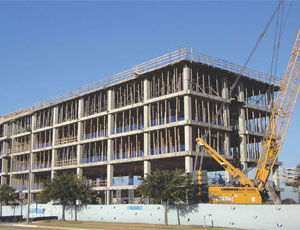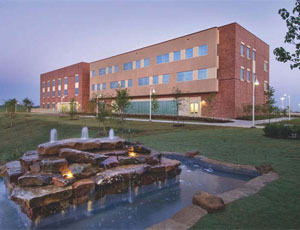As part of its quest to conserve energy and operate a more efficient facility, Maxim Integrated Products of Beaverton, Ore., has installed the first of several FANWALL® arrays, retrofitting existing air-supply units.


“We’re doing it to save energy, and we looked to get better performance improvement and less maintenance at the same time,” says Pankaj Patel, facilities project engineer at semiconductor manufacturer Maxim.
Maxim fabricates silicone wafers in clean rooms at the late 1970s-era plant, still functioning with its original air handlers. The plant operates 24 hours a day, seven days a week.
“This was an opportunity to take a new technology and retrofit it into an old piece of equipment,” says Mike Colligan, advanced technology division manager for EC Co. of Portland. “The equipment they are replacing is 30-year-old technology, and they are replacing it with 21st-century technology.”
Colligan adds that the equipment, which runs 24/7, “has far exceeded its original designed life cycle. We have given new life to this equipment.”
EC Co. has completed one of the conversions. Patel estimates that FANWALL will save 140,000 kilowatt hours annually. Maxim plans to install two more FANWALL projects in early 2010. Patel estimates each will save about 160,000 kilowatt hours per year. Prices vary from $75,000 to $150,000 per FANWALL, based on how many fans are needed. Patel anticipates the return on investment for the first unit will be 1.6 years and on the next two about 1.5 years for each FANWALL.
“An investment today will have lasting savings, paying itself year after year,” Colligan says. “Then you roll in the maintenance reduction, which on this type of equipment is substantial.”
All three installations will receive incentives from the Energy Trust of Oregon, which also provided engineering support. Colligan estimates the incentives should cover about 30% of the installed cost.
“We’re doing one or two [at a time] because this directly affects our manufacturing area,” Patel says. “We cannot shut the area down for a long time.”
EC Co. installed the first custom-designed FANWALL in 12 hours, while the air-supply unit was shut down and other air-supply units cooled the affected area. The Maxim FANWALL installation required no architectural modifications to the building or rigging, just careful coordination.
“It took a lot of meetings because there was no room for error,” Patel says.
The smaller fans arrive in cubes and are rolled into the area on a dolly.
“You just stack them like blocks, bolt them together and to the unit, and that creates the array,” Colligan says.
Technology of FANWALL
HUNTAIR of Tusalatin, Ore., developed the FANWALL technology.
“The new profile creates less turbulence and more gently pushes the air,” says Henry J. Bauer, an...




Post a comment to this article
Report Abusive Comment